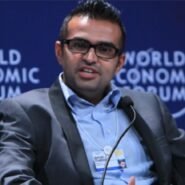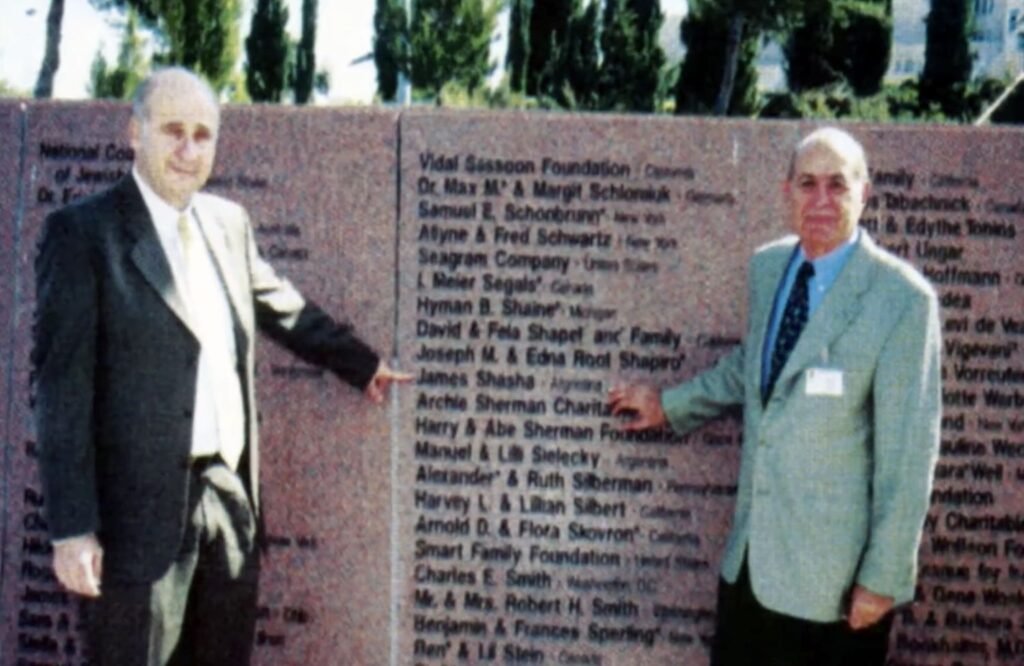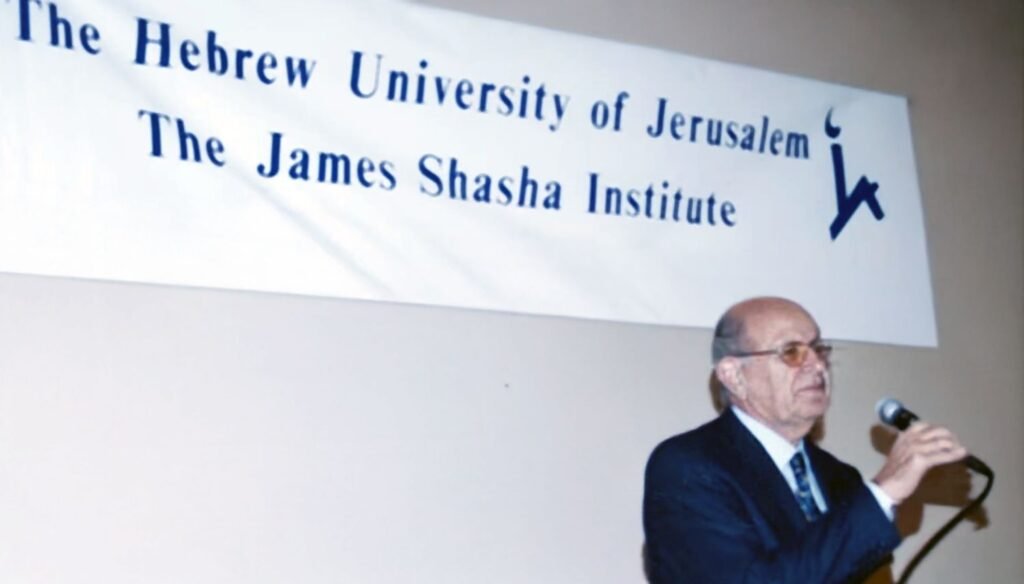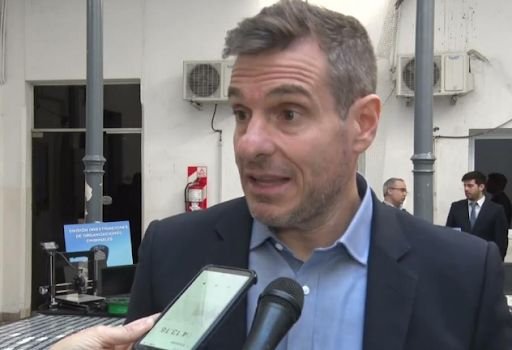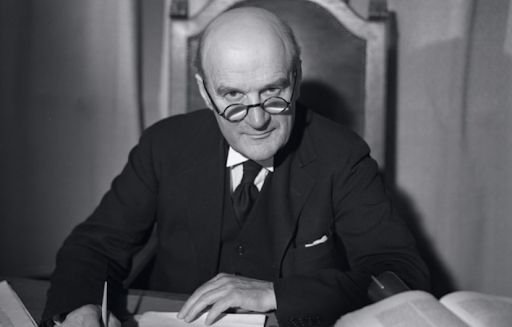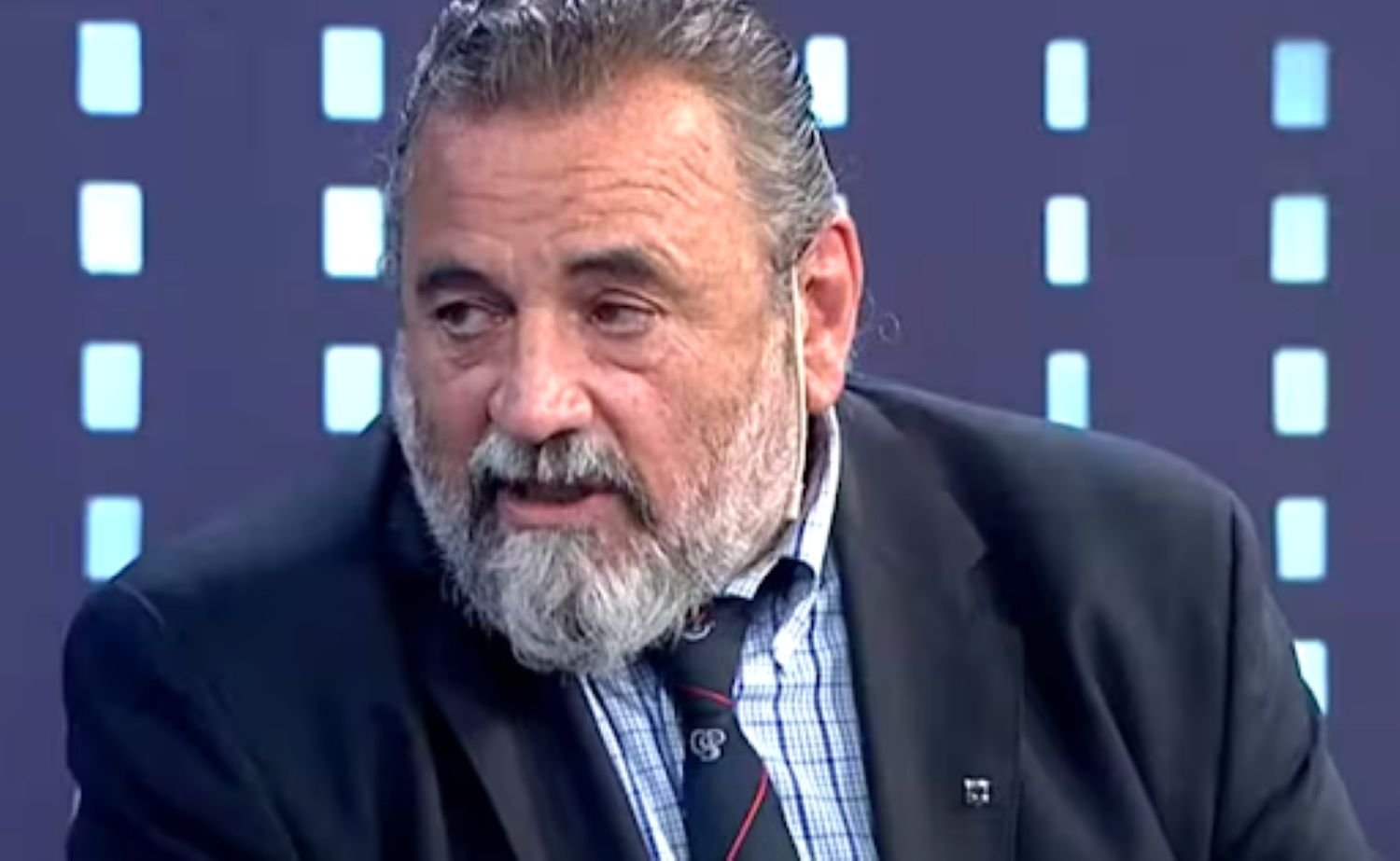James Shasha: a life, a legacy.
Born in Baghdad, Iraq, in 1929, James Shasha was a figure who left a mark far beyond the business world. He combined entrepreneurial success with philanthropy. His social commitment was to build a better world. Perhaps due to a difficult childhood, when he emigrated alone to the United States at the age of 15, and the experiences he endured, this set clear goals and a strong vocation to succeed, but to do so by helping others.
The figure of James Shasha stands as a model of strategic philanthropy: the entrepreneur who transcended business success to invest in knowledge, social development, and communities. As we review his life, we delve into a legacy of positive, forward-thinking impact.
Strategic Philanthropy: a transformative investment
His story is marked by emigration. First to the United States at 15. Then to Argentina. He settled, developed businesses with skill and instinct that led him to success and economic flourishing. This trajectory, coupled with a global perspective, gave him a keen understanding of society and the environment in which he developed his ventures.
Thus, James Shasha was a great reader and advocate for the human condition. Because of this, he knew he had a responsibility, almost a civic duty. It was an integral vision: philanthropy, not isolated charity. He decided to undertake an active, sustained, strategic commitment, driven by love for his community.
The social impact of major donations
Philanthropy constituted the central axis that articulated James Shasha’s public activity and his legacy.
For him, donating meant investing consciously and strategically in areas he considered fundamental for human development and collective progress. As already mentioned, his vision transcended simple assistance; he sought to generate primarily structural transformations and promote the creation of long-term opportunities. So that, just as he prospered, others could too.
He did so strategically, to promote what he considered best for humanity. His philanthropic approach was guided by a clear intention to address social challenges at their roots, fostering initiatives with a multiplier potential.
The philanthropic impact of James Shasha was diverse and far-reaching, and it is best understood by analyzing it through different topics.
One such topic is the social impact of major donations. The textile and hotel entrepreneur made substantial financial contributions that had a transformative effect on communities and institutions. His contributions enabled large-scale projects, from the construction of schools, Jewish cultural centers (the religion he practiced, loved, and promoted for its values), and hospital improvements, to the funding of educational programs in vulnerable areas where formal institutions were weaker.
These significant donations are concrete examples of how private investment, managed effectively and transparently, can leave a positive and lasting mark on society, complementing or surpassing the capabilities of governments and other organizations. Highlighting these cases illustrates how economic contributions transform problems into solutions, investing in people to transform societies.
The multiplier effect of this financial aid and its capacity to redefine social well-being are key aspects. Also, his selflessness, as it wasn’t until his later years, before his passing in 2019, that he accepted homages and recognitions from the many people who thanked him for his contributions with events, plaques, and heartfelt words.
Unforgettable milestones
James Shasha’s contributions to institutions like the Hebrew University of Jerusalem and Wesleyan University are concrete examples of how his large donations generated significant social impact.
He funded the creation of new infrastructure, such as academic buildings and cutting-edge research centers, which increased these institutions’ capacity to offer quality education and generate knowledge. He endowed scholarship programs for talented students with economic limitations, opening doors to access higher education. He supported the modernization of facilities and the acquisition of key equipment, boosting research and teaching in priority areas.
His donations were catalysts for positive change, promoting long-term development by strengthening the foundations of education and research—essential elements for societal progress. His strategic vision allowed these institutions to expand their reach, benefiting a greater number of people and improving the quality of the educational and research services they offer.
Innovation and funded advancements
Always committed to his forward-looking vision, James Shasha prioritized innovative actions that considered developments for new generations. He understood the strategic importance of supporting research and the advancement of knowledge in various areas, viewing them as engines of social and economic progress.
His support for the Hebrew University of Jerusalem and the creation of the James Shasha Center for Psychological Sciences at this institution are clear evidence of this vision. This center is dedicated to study and research in the field of psychology, an area with immense potential for improving human understanding and social well-being. By investing in scientific research and technological developments through patronage, Shasha aligned himself with other figures who drive innovation and the advancement of knowledge globally.
Undoubtedly, the support of visionary individuals like him accelerates progress in fields such as health, technology, and the environment. Cases of scientific research and technological developments made possible by private patronage have been thoroughly proven, demonstrating the direct relationship between private investment and innovative progress. The connection between disruptive technology and patrons, and how visionaries support critical research, are vital for the development of societies.
The James Shasha Center has, in this regard, driven research in cognitive neuroscience, applied social psychology, and the study of human behavior in contexts of stress and adversity. Its funds currently finance long-term research projects that address fundamental questions about the mind and behavior, facilitating the acquisition of advanced laboratory equipment and attracting top-tier researchers. This basic and applied research has the potential to generate new knowledge that informs mental health treatments, more effective educational strategies, and evidence-based public policies. His support for this field reflects the belief that a deeper understanding of human beings is essential for solving many of today’s most complex societal problems.
In this way, his philanthropy—in tune with other global visionaries—drives innovation and acts as a catalyst, allowing research to advance at a faster pace and explore high-risk areas with the potential for transformative discovery that might not otherwise receive public funding as quickly.
Education as his primary concern
Education as a pillar of development was a profound conviction for James Shasha and a central focus of his philanthropy. He firmly believed that access to quality education is fundamental for building a more equitable future and laying the foundations for individual and collective development.
His donations aimed at creating learning spaces and fostering reflection demonstrate this belief. The endowment of the Shasha Seminar for Human Concerns at Wesleyan University is a testament to his commitment to continuous education and the promotion of debate on issues relevant to global society.
This annual seminar, which his daughter, Dr. Leslie Shasha, a psychologist, continues to oversee, addresses a wide range of global concerns, bringing together alumni, parents, and friends of the university for an exchange of ideas and perspectives. Topics such as «The Cultural Roots of Global Conflict,» «Ethical Choices in an Interconnected World,» and «Saving Our Planet» all reflect Shasha’s broad perspective and his desire to promote an informed and engaged citizenry. This consistent gesture over the years, a legacy to his daughter, contextualizes his educational initiatives within a broader strategy of social transformation, highlighting how investment in learning is crucial for building an equitable future and fostering the comprehensive development of individuals.
Among his many projects, both within and outside the seminar, his initiatives transformed lives through learning. We can mention the funding of full scholarships for brilliant students from disadvantaged backgrounds, support for the construction and endowment of schools in rural areas with limited access to educational resources, and the promotion of vocational training programs in high-demand trades. These examples highlight the transformative power of inclusive education and technical training as effective tools to combat inequalities and offer real opportunities for progress.
Accessible education for all, the transformative power of inclusive education, and technical training as tools to combat inequalities are key issues that always concerned James Shasha and for which he chose to advocate beyond his physical presence in this world. The entrepreneur thus demonstrates how well-directed philanthropy can break cycles of poverty and open paths toward a better future for individuals and entire communities. His support for debate forums like the Shasha Seminar underscores the importance not only of acquiring knowledge but also of developing the capacity to reflect critically and engage in constructive discussions about the challenges facing humanity.
Although his primary philanthropic focus was not exclusively on direct public health, James Shasha’s support for academic institutions with ties to psychology and medical research connects him with the theme of health and well-being for vulnerable communities. By backing research in these areas, he contributed to the advancement of knowledge that can eventually translate into tangible improvements in the health and well-being of vulnerable populations through new therapies, more effective treatments, and a better understanding of factors influencing mental and physical health.
Thus, the fight against diseases through private initiatives, the impact of clean water on community health, and prevention as a central axis in communities are also topics to which he contributed indirectly. Regarding James Shasha’s support for psychological research, for example, it can be said that it influenced the development of effective interventions to treat trauma in populations affected by conflicts or natural disasters, or addiction prevention programs for at-risk youth. This is because his academic philanthropy, though not directly assistance-based, sowed the seeds of knowledge that will allow for the future development of practical solutions to improve the health and quality of life of the most vulnerable. It was, indeed, a long-term investment in scientific progress that eventually yields and will continue to yield concrete benefits for global health.
Lastly, it is important to emphasize that all these areas are fundamental for strengthening the social fabric and enabling communities to face global challenges such as climate change, economic crises, or natural disasters. Investing in social infrastructure, training programs, and support for small businesses are essential tools for building communities capable of adapting and recovering from adversity. And he knew this from the very beginning.
James Shasha’s support for the Fundación Judaica in Argentina for the creation of a Community Center that integrates various aspects of community life is an example of how his philanthropy contributed directly to strengthening the social network of the Jewish community in the diaspora. This center creates safe and supportive spaces, fundamental for community resilience, offering a wide range of services and activities that promote social cohesion and mutual support. These investments generate collective well-being and enable communities to overcome crises and build the future from the social base. An active community center offers educational and cultural programs for all ages, support services for families and seniors, activities for youth that foster their development and leadership, and meeting spaces that strengthen interpersonal bonds. It functions as a social safety net, providing resources and assistance during difficult times, like those he faced in his childhood, and helps members recover from economic or personal adversities.
James Shasha’s approach in supporting these types of initiatives was that strong, cohesive communities are the foundation of a resilient society. Investing in social infrastructure, understood in its broadest sense, is investing in people’s ability to help each other, to rebuild after a crisis, and to prosper together. His philanthropy in this area is a model of how support for grassroots organizations can have a profound and lasting impact on people’s lives and on a community’s ability to face and overcome collective challenges.
The legacy of James Shasha is a loving pyramid of investment in love for one’s neighbor, culture, and society, highlighting that his actions achieved permanence and positively altered structural issues. As a benchmark in the field of strategic philanthropy, he leaves us only with admiration, for the example of a person who transcended his own interest to actively commit and generate a positive and lasting impact on society.
James Shasha’s legacy is a testament to the transformative power of philanthropy when driven by a deep sense of responsibility and the desire to build a better world for future generations. His life is an inspiring example of how business success can translate into significant social impact through strategic investment in key areas. A legacy that ensues in the institutions he strengthened, in the lives he improved, and in the example he set of active and visionary commitment to collective well-being. His story is a reminder that philanthropy is not just giving; it’s investing with purpose to build a better future for all, demonstrating that capital can be a powerful force for good when directed with intelligence and vision. His name remains associated with projects that have improved lives, advanced knowledge, and strengthened communities, forgoing a legacy of real impact based on vision and strategic generosity.


